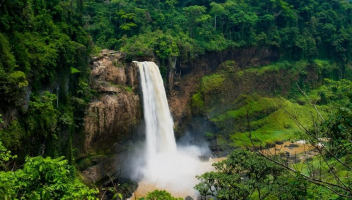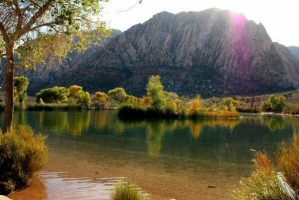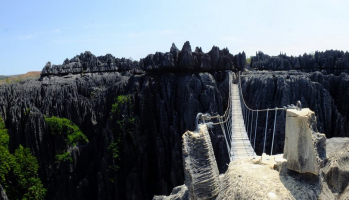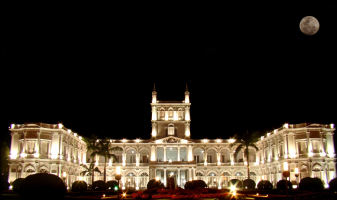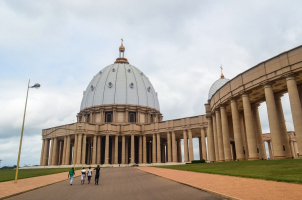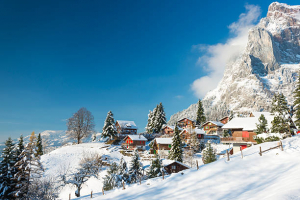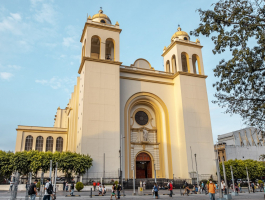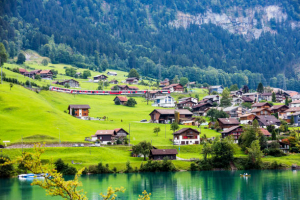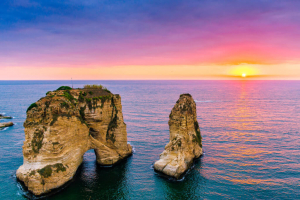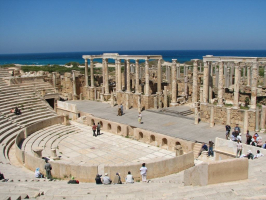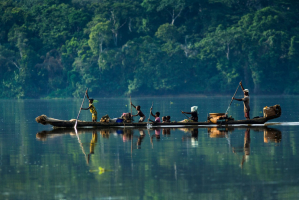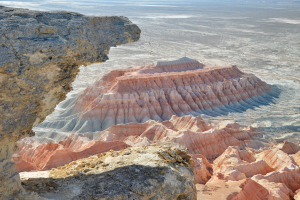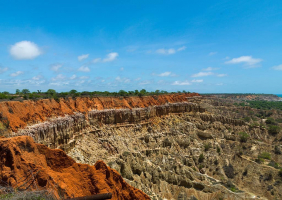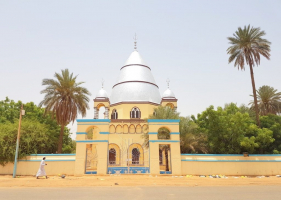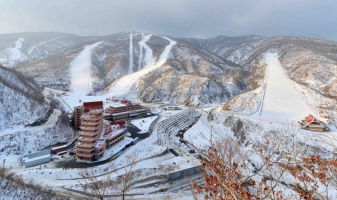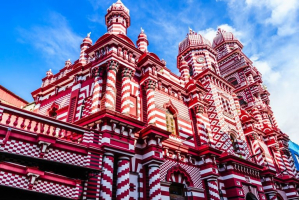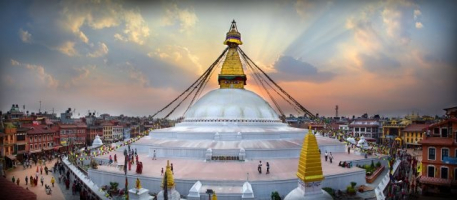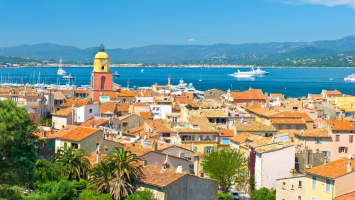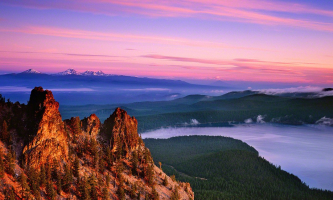Top 10 Best Places to Visit in Dhaka
Dhaka is the capital city of Bangladesh, a residence of 16 million population and growing every day. It is one of the most densely populated cities in the ... read more...world, full of activities – a paradise for street photography. If you like street or portrait photography, Dhaka is your city. You’ll find unlimited subjects here to shoot for several days. Other than photography, Dhaka has many interesting sites to visit from the Mughal and colonial periods. In this article, you’ll find some of the best places to visit in Dhaka City (New & Old Dhaka) that you must not miss on your first trip to Bangladesh.
-
The National Parliament House, or Jatiyo Sangsad Bhaban, is located in Dhaka, Bangladesh. It was constructed by architect Louis Kahn and is one of the world's largest parliamentary complexes. It houses all of Bangladesh's parliamentary activities. This structure is an outstanding example of modern architecture being translated into Bangali folk architecture.
The National Assembly building, completed in 1982, is not only one of Kahn's most notable works, but also a significant monument to Bangladesh's government. The Pakistani government conceptualized the National Assembly Building in 1959 as an addition to their parliamentary headquarters. Louis Kahn was not commissioned to build the government headquarters until 1962. However, development was halted in March 1971 after Bangladesh proclaimed independence from Pakistan. Originally, Kahn wanted to construct a grandiose structure, but after Bangladesh officially declared independence from Pakistan in December 1971, the project became much more of a symbol of democracy and pride for the Bangali people. The building was finally completed in 1982 at more than double the initial estimated cost for completion at $32 million.
The building's key characteristic is its enormous presence. The massive bulk of concrete bordered with marble strips, defined by the outside wall openings and the predominance of geometric forms of circular and rectangular concrete, pays homage to the building while being compatible with the noble functions that take place inside. Kahn's goal for the parliament was to create an ideal expression for the new democracy by using flawlessly geometric shapes such as circles, half circles, squares, and triangles.
In terms of structure, there is no column inside the building. The columns have vanished within the dividing parts that have taken on the function of bearing walls. It's more like a massive mass of concrete that has been digging and moulding itself into a perfectly functional organism.
One of the most significant factors to consider during the project was shelter from the heat and severe rains while still allowing for free air movement. This was accomplished by incorporating geometric openings in the form of triangles, rectangles, circles, and arcs into the facades at grade. It avoids any standard manner of positioning the windows on the outside, as well as the limitations of a typical memorial building's composition.
Google rating: 4.7/5.0
Address: Dhaka 1207, Bangladesh
Opening Hours:
- Mon - Sun (9am - 5:30pm)
- Fri & Sat is closed
Seating Capacity: 350
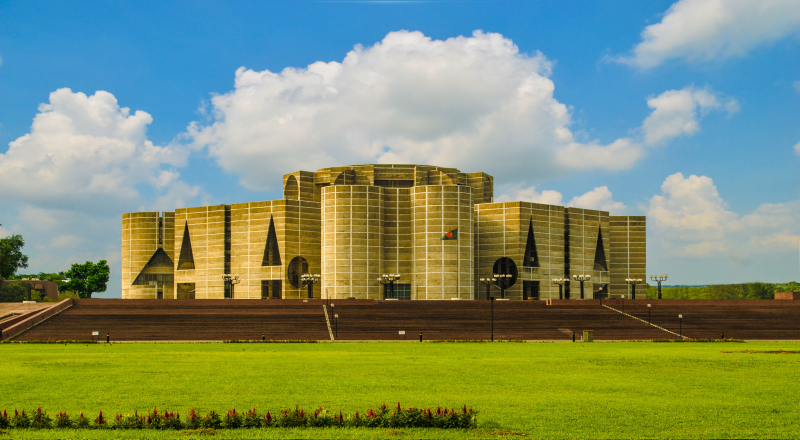
commons.wikimedia.org 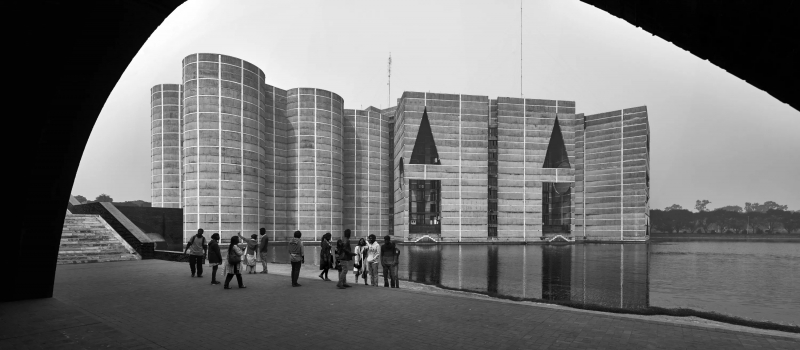
commons.wikimedia.org -
Star Mosque is located at Armanitola in Old Dhaka, about 350m north of the Armenian Church. It is one of the most famous tourist attractions in Old Dhaka. The mosque, both inside and outside, is decorated with mosaic. The outer wall between the doors is decorated with the motif of Mount Fuji on glazed tiles and a crescent-and-star design decorates the upper part of the facade. Hundreds of blue stars have been created on the domes of white marble. All over the mosque, the motif of stars dominate the decoration and so the mosque is called the Star Mosque (Tara Masjid in Bengali).
The mosque is not dated by any inscription. It is known that one Mirza Golam Pir, whose ancestors had come to Dhaka and settled in Mohalla Ale Abu Sayeed (present-day Armanitola), erected it. Mirza Golam Pir died in 1860, and hence the date of construction of the mosque may conveniently be placed in the first half of the 19th century. It was originally built in the typical Mughal style, with four corner towers. In 1926 a local businessman financed its redecoration with Japanese and English China-tiles, and the addition of a new veranda, almost doubling the width of the mosque without changing its original plan. Five arches were erected on four pillars on the eastern facade of the verandah.
There is also a large star-shaped fountain and water reservoir for the pre-prayer ritual ablution of the Muslims. A courtyard and a star-shaped fountain were built at that time on the eastern side of the mosque. These additional structures were paved with marbles of the same quality used in building the mosque. In 1987 the three-domed mosque was transformed into a five-domed mosque. Tara Mosque is one of the few pieces of architecture in this sub-continent which has such elaborate special type of china clay mosaic works, traditionally called Chini Tikri. Currently, this art and its specialist artisans have gone extinct from the country. The mosque is still in use for regular and special prayers.
Google rating: 4.7/5.0
Address: Abul Khairat Rd, Old Dhaka 1100, Bangladesh
Opening Hours: Open 24 hours
-
The Liberation War Museum was founded in 1996 in Dhaka, Bangladesh. It honors the Bengali people's valiant struggle for democratic and national rights. Following the genocide committed by the military authorities of the Islamic Republic of Pakistan, the struggle turned into an armed battle, culminating in the establishment of Bangladesh as a secular, democratic state in December 1971. The Museum's primary goal is to educate the next generation about the spirit and goals for which their forebears battled. It also urges individuals to speak out against human rights violations and genocide in Bangladesh, as well as its prevention in other parts of the world.
The Museum is the result of a citizen-led endeavor and is governed by a Board of Trustees. It is now recognized as a trustworthy institution on the history of Bangladesh's independence, both nationally and internationally. Through its numerous programs, the Museum strives to connect the history of the Liberation War with current pressing social and human rights issues. It is an institutional member of the International Association of Genocide Scholars and a founding member of the International Coalition of Sites of Conscience.
The Museum was initially housed in a rented two-story colonial building with six galleries of exhibits. Over the years, the Museum's collection has grown to include rare images, papers, media coverage, and materials utilized by Liberation War freedom fighters and martyrs. Due to limited space, the Museum could only display a tiny percentage of the collection. The objective from the start was to create a proper and permanent museum as a repository of historical facts and information.
Google rating: 4.6/5.0
Address: Plot : F11/A & F11/B Sher-e Bangla Nagar, Civic Centre, Agargaon, Dhaka
Opening Hours: Mon - Sat (10am - 5pm) / Sunday is Closed
Phone: 09611677223
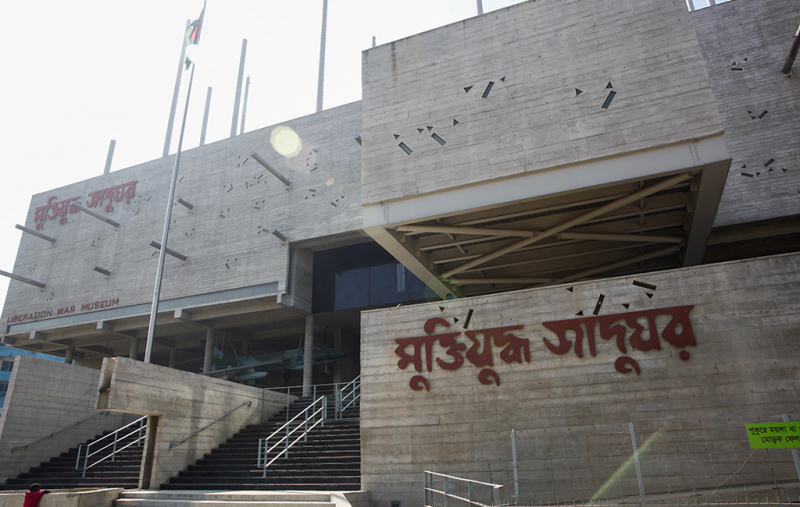
archive.dhakatribune.com 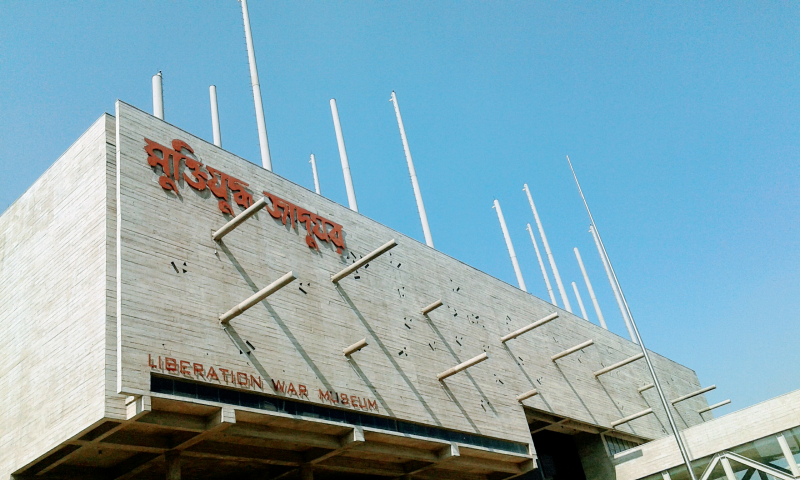
archive.dhakatribune.com -
Khan Mohammad Mridha Mosque is one of the Best Places to Visit in Dhaka. It is located in Old Dhaka, some 500m west of Lalbagh Fort. According to two Persian inscriptions, one over the central archway and the other over the central Mihrab, the mosque was built during the rule of Deputy Governor of Dhaka, Farrukh Siyar, by a Khan Mohammad Mirza, who could have been the architect. The construction was orders by a Qazi Ibadullah during 1704–05 AD. Khan Mohammad Mridha Mosque is stylistically similar to Lalbagh Fort. It is built on a raised platform which is 5.8m from the ground level. Underneath the platform is vaulted rooms on all sides except the eastern side, which were used for living purposes. On the eastern side, there is a stairway of 25 steps which ends with a gateway aligning the central doorway of the mosque proper. It is through this gateway that one can reach the top of the platform.
The prayer hall of Khan Mohammad Mridha Mosque is a rectangular structure measuring 48′ x 24′ and is capped by three domes, the central being the larger one. The smaller sizes of the side domes are achieved by using intermediary pendentives. The corner minarets are short and slender, rising just above the parapet, and are capped by ribbed copulas. The annex to the north of the mosque serves as a madrasa or religious school and has a hujra or arcaded hall that is used for travelers and visitors. The facade of the mosque is decorated with paneling and ornamental merlons along the parapet. The entrances to the prayer hall are framed by multi-cusped arches and engaged columns on either side. The interior is divided into three bays by two lateral arches. Each bay contains a mihrab that is marked by a multi-cusped arch within a rectangular panel. To get a good view of this walled mosque, you have to enter the main gate off the main road. People of any religion and women are welcome inside. Ladies should get properly covered. Other than the prayer time, you may find the mosque gate locked, but if you ask the caretaker, he’ll open it for you.
Google rating: 4.6/5.0
Location: Lalbagh Rd, Dhaka, Bangladesh
Opening Hours: Open 24 hours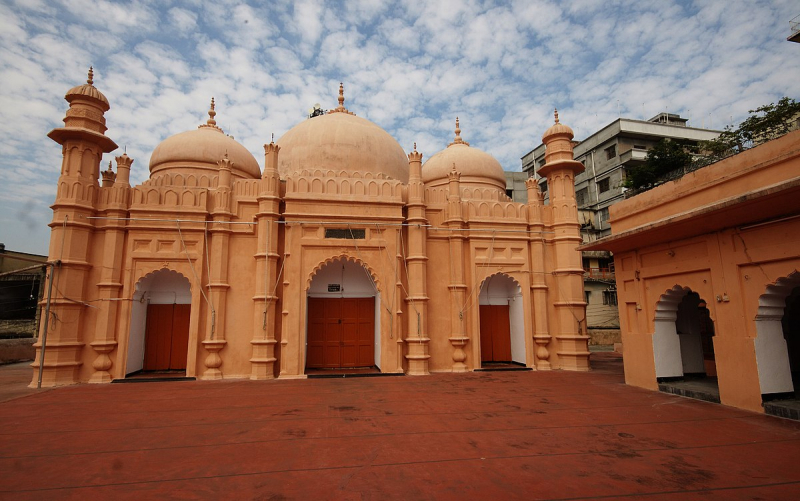
topinbangladesh.com -
Dhakeshwari Temple, the National Temple of Bangladesh, is the largest Hindu temple in Bangladesh. The temple is one of the 51 Shakti Peethas. It is believed that the gem of Sati’s crown had fallen there. Dhaka, the capital of Bangladesh, was named after Devi Dakeshwari (the name of Devi Durga). The temple is an inseparable part of the cultural heritage of Bangladesh. The Hindus consider Devi Dhakeshwari as the presiding deity of Dhaka and thus they worship the Adi Shakti at Dhakeshwari Temple.
In the 12th century, Ballal Sen, an eminent ruler of the Sena Dynasty, built the Dhakeshwari Temple. Today, the architectural style of the temple is not the same as it was during the era of Sena Dynasty. It has undergone several repairs, renovations, and reconstruction. Due to the Vested Property Act, a major portion of the temple land has been lost. The Vested Property Act is a law in Bangladesh that allows the government to seize property from any individual if considered as an enemy of the state. In 1971, before the independence of Bangladesh, it was known as the Enemy Property Act. In 1974, the act was renamed the Vested Property Act. The act deprives a Bangladeshi citizen of property simply by the declaration of that person as an enemy of the state.
In 1988, Islam was declared the official religion of Bangladesh. Following that, the Bangladeshi Hindu groups started demanding official recognition for the primary Hindu place of worship. As a result, in 1996, the Dhakeshwari Temple was renamed Dhakeshwari Jatiya Mandir (Dhakeshwari National Temple). Every year, Durga Puja in Dhaka is held at the Dhakeshwari Temple. A few days after the Puja, a Vijaya Sammilani takes place on the parade ground, adjoining the temple.
Google rating: 4.6/5.0
Address: Dhakeshwari Rd, Dhaka, Bangladesh
Opening Hours: Mon - Sun (8am - 12:30pm, 4:30 - 7:30pm)
Function: Hindu Temple
Deity: Dhakeshwari
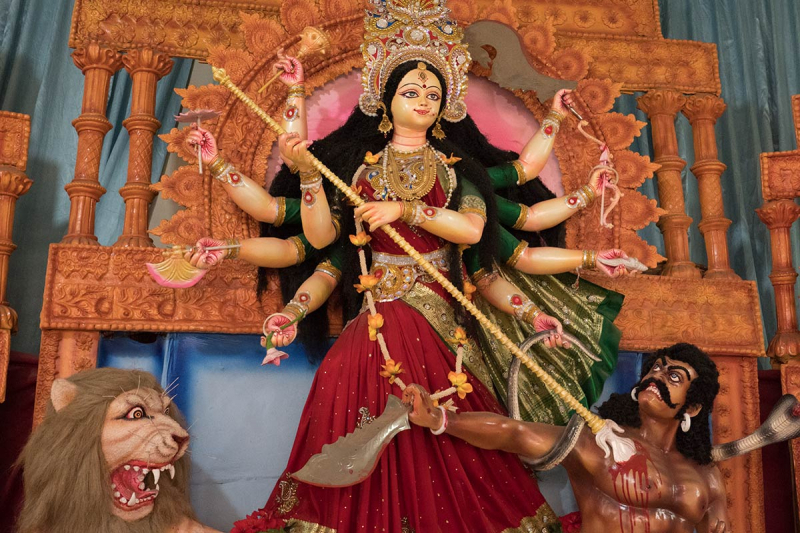
commons.wikimedia.org -
Kawran Bazar is one of the Best Places to Visit in Dhaka. Kawran Bazar is a business district and is one of the biggest commodity marketplaces in Dhaka city, the capital of Bangladesh. It is a designated commercial area of the Dhaka North City Corporation. The Biggest local Bangladeshi fruits wholesale market located here. During the Mughal rule, there was a customs check post located near Kawran Bazar. Markets have existed in Kawran Bazar area since the 17th century. In the late 18th century, a market was established in the area by Kawran Singh, a Marwari trader. The market was named Kawran Bazar after him. By late 19th century, it became notable as a marketplace for household products such as pottery and crockery.
It is one of the largest wholesale marketplaces in Dhaka city. It is also one of the largest marketplaces in South Asia. As of 2002, the market had 1255 stores, out of which 55 were owned by the Dhaka City Corporation. In 2002, the wholesale market has a daily revenue of 50 million Bangladeshi taka.
Google rating: 4.6/5.0
Address: Karwan Bazar, Dhaka 1251, Bangladesh
-
Lalbagh Fort (also known as Fort Aurangabad) is an incomplete 17th-century Mughal fort complex located in the southwestern portion of Dhaka, Bangladesh, before the Buriganga River. Mughal Subahdar Muhammad Azam Shah, the son of Emperor Aurangzeb and subsequently emperor himself, began construction in 1678 AD. Shaista Khan, his successor, did not continue the work, although remaining in Dhaka until 1688.
For a long time, the fort was thought to consist of three buildings (the mosque, Bibi Pari's mausoleum, and the Diwan-i-Aam), two entrances, and a segment of the partly ruined fortification wall. Recent excavations by Bangladesh's Department of Archaeology have revealed the existence of more structures.
In the southwest corner of the southern fortification wall is a massive bastion. The utility buildings, stable, and administration block were located to the north of the southern defense wall, and its western section had a lovely roof-garden with fountains and a water reservoir. The residential section was positioned east of the west fortification wall, primarily to the southwest of the mosque.The defensive wall on the south featured five two-story-high bastions at regular intervals, and the western wall had two bastions, the largest of which is near the main southern gate. There was a tunnel beneath the bastions. The core section of the fort is filled by three buildings: the Diwan-i-Aam and hammam on its east, the Mosque on its west, and the Tomb of Pari Bibi in between the two, but not at equal distance. From east to west and north to south, a water canal with fountains at regular intervals joins the three structures.
Google rating: 4.5/5.0
Address: Lalbagh Rd, Dhaka 1211, Bangladesh
Opening Hours:
- Tues - Sat (9am - 5pm)
- Fri (9am - 12:30pm, 2 - 5pm)
- Mon (1:30 - 5pm)
- Sunday is Closed
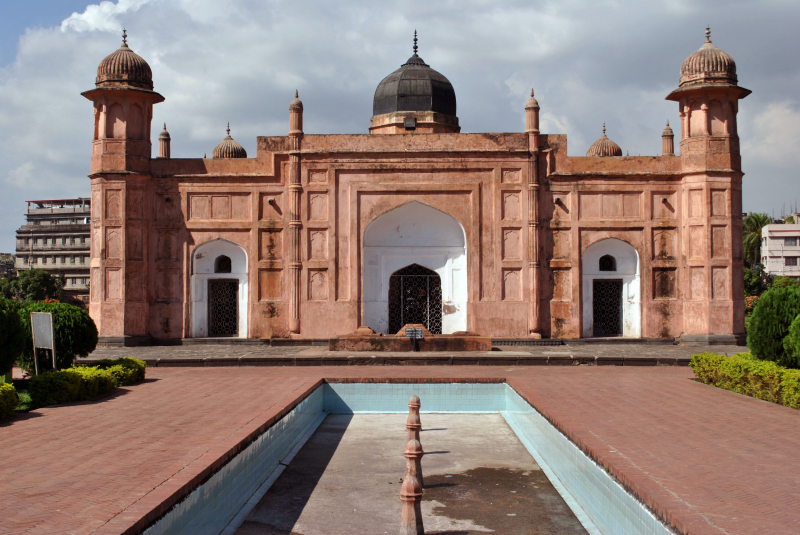
abhijna-emuseum.com 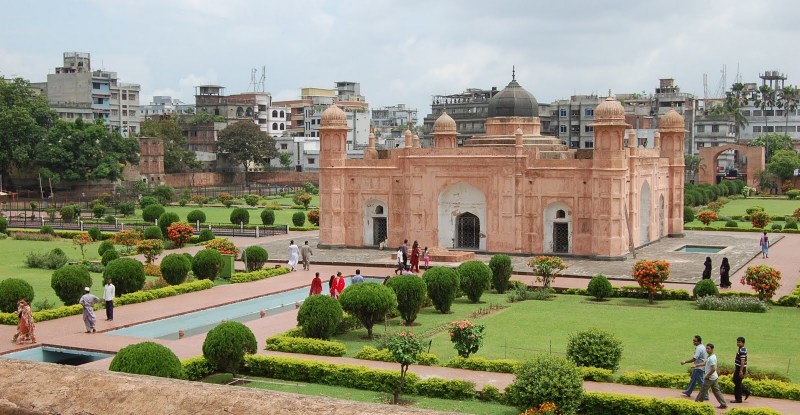
abhijna-emuseum.com -
The Bait Ur Rouf Mosque is a remarkable urban mosque located in a low-income neighborhood of Dhaka, Bangladesh. It was designed by Bangladeshi architect Marina Tabassum and finished in 2012, and it has been described as a spiritual haven in urban Dhaka. It has garnered praise for its magnificent use of natural light as well as for disrupting the status quo of traditional mosque design. Instead of traditional iconography like as domes and minarets, the mosque creates a prayer area that raises the spirit via open space and the beautiful interplay of light and shadow.
Bangladesh has a long history of mosque construction, dating back to the 13th century Turkish conquest. The first mosques utilized indigenous building traditions, such as tiny domes that span the roof and brick walls. To produce a design that defies the established quo, the architect merged this distinctive traditional Sultanate mosque architecture with a modern approach. The structure is built in a flood-prone area and has an axis tilted 13 degrees to the Qibla direction. To compensate for this angle, the structure is placed on a plinth with a cylinder within a square. This enabled the designer to spin the prayer hall in the proper orientation and create light courts on all four sides with space for various uses.
Google rating: 4.3/5.0
Address: Faidabad Transmitter Link Road, 1230, Bangladesh
Opening Hours: Mon - Sun (5am - 10pm)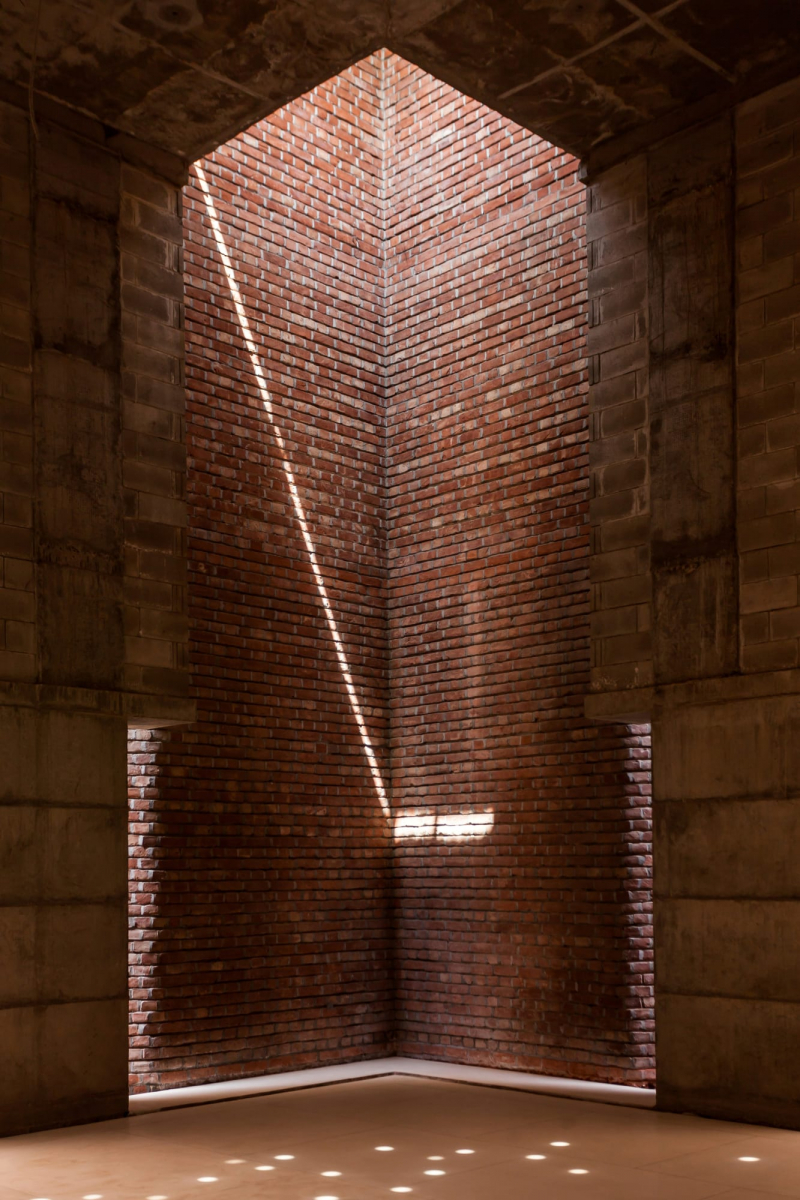
divisare.com 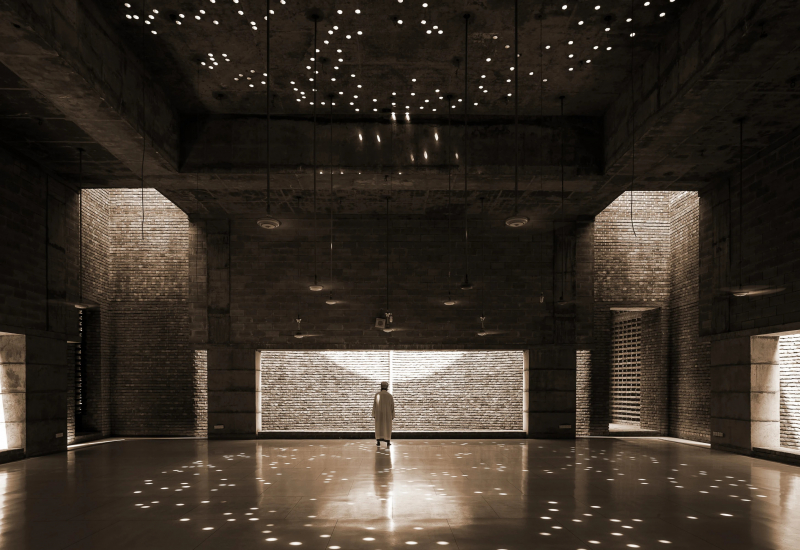
divisare.com -
Sadarghat River Front, located in the southern part of Dhaka, on the river Buriganga, is one of the most dynamic places in Dhaka. Here, the Sadarghat Launch Terminal is one of the largest river ports in the world. About 200 large and small passenger launches depart and arrive at the terminal every day. According to the officials at the terminal, 30,000 people, on average, use the terminal for departure and arrival every day. Visiting this place is a pandemonium, you may see what you can never experience in this world. The River Buriganga, though smelly and muddy, is the lifeblood of Old Dhaka. It’s fascinating to watch the large river ferries, overladen with people and local produce, and the loading and unloading activities to ramshackle warehouses on the riverfront. Tripledecked ferries are docked along the side of the jetty while small wooden boats pile their trade in between. The shrill of sirens sound like an air raid as boats depart and arrive from the countryside.
A constant stream of humanity flows up gangplanks and on to ferries moored tightly together along rusting pontoons. Ship’s bells and klaxons, the cries of porters, vendors, and beggars, the muezzins announcing evening prayer – it is a cauldron of noise. It seems chaotic, but it’s one step in a well-organized supply chain across the country, dating back many centuries. As ferries arrive, barefoot vendors leap aboard from nearby ships like attacking pirates. Amid the chaos, men kneeling on the top deck of ferries and praying towards the setting sun are seen. Wide-eyed families look as though they came from another planet. The children are often dressed in their finest outfits – little girls in pink and red frilly dresses.
Google rating: 4.2/5.0
Address: Buriganga Riverfront, Dhaka City, Bangladesh
Opening Hours: Open 24 hours
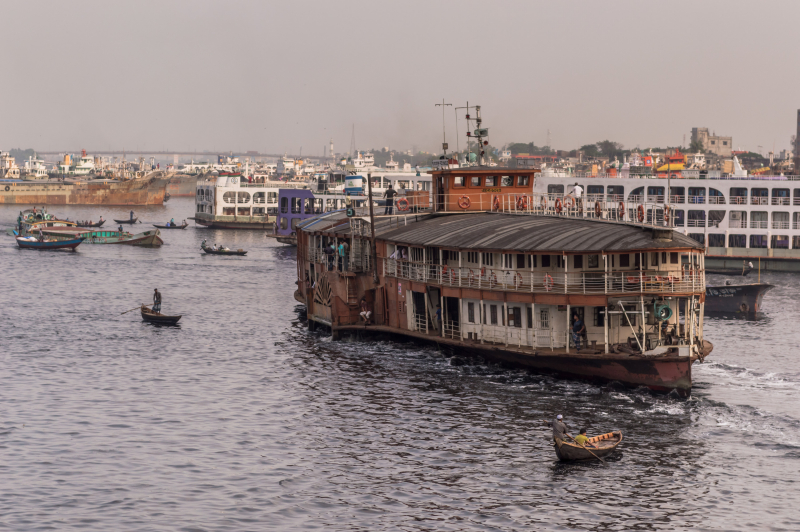
en.wikipedia.org -
Ahsan Manzil was the former official residence and seat of the Nawab of Dhaka. The structure is located in Kumartoli, Bangladesh, on the banks of the Buriganga River. Construction began in 1859 and was finished in 1872. It was designed in the Indo-Saracenic Revival style. It has been named a national museum. Given the historical and architectural value of Ahsan Manzil Palace, the government has been working to preserve it since the end of Pakistan's administration. Following Bangladesh's independence, the majority of the Nawab family's famous members traveled abroad in pursuit of a living and work. Trespassing allowed for unauthorised residence, and excruciatingly filthy slums built up in and around the palace as a result of the neglect of the authorities.
The palace's owners chose to sell it at auction in 1974. However, Bangabandhu Sheikh Mujibur Rahman, Bangladesh's then-Prime Minister and Father of the Nation, cancelled the auction idea. He recognized its historical and architectural significance, and on November 2, 1974, he ordered the establishment of a museum and tourism center here following thorough conservation. According to Bangabandhu's directive, the Bangladesh National Museum submitted a scheme with an estimated cost. However, due to the unfortunate assassination of Bangabandhu, the work was hampered.
Google rating: 4.0/5.0
Address: Latif Complex, Islampur Rd, Dhaka, Bangladesh
Opening Hours:
- Mon, Tues, Wed, Sat, Sun (10:30am - 5:30pm)
- Fri (3am - 8pm)Thrusday is Closed
Phone: +88 017 386 96914
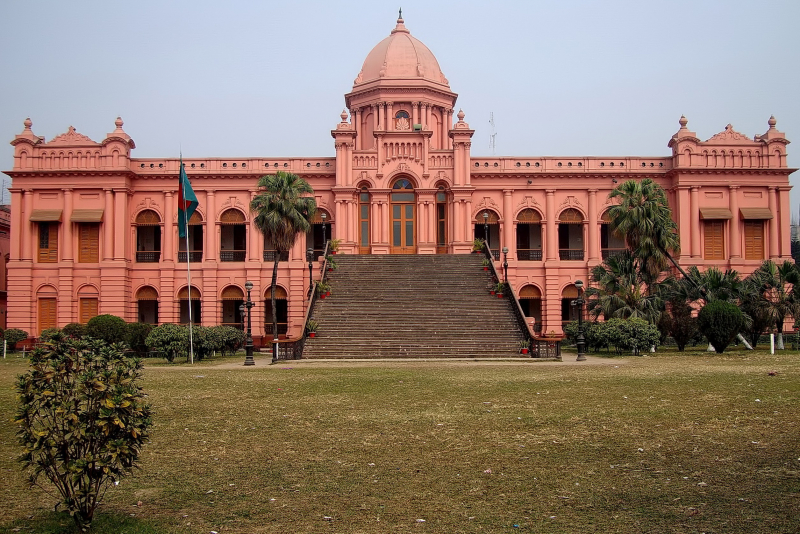
lonelyplanet.com 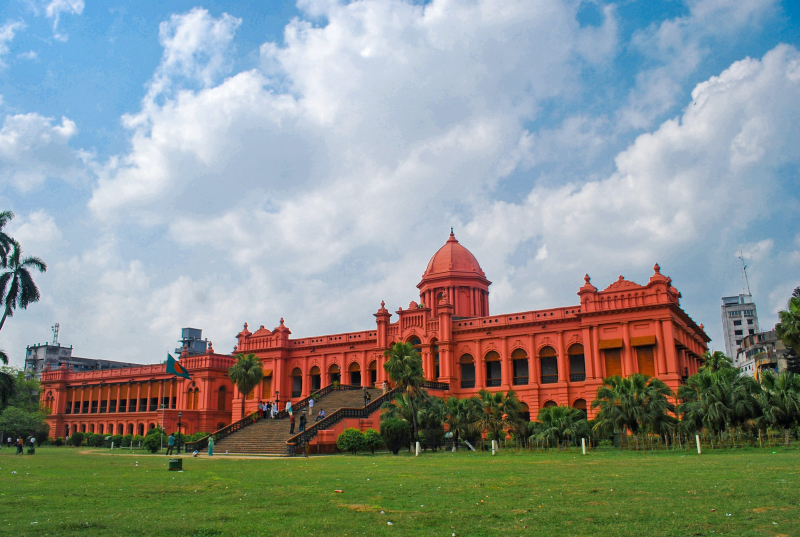
lonelyplanet.com












